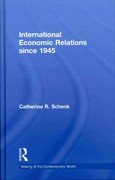Question
4. Suppose that we modify the Solow growth model by allowing long-run technological progress. That is, suppose thatz= 1 for convenience, and that there is
4. Suppose that we modify the Solow growth model by allowing long-run technological progress. That is, suppose thatz= 1 for convenience, and that there is labor-augmenting technological progress, with a production function
Y=F(K, bN),
where denotes the number of units of "human capital" per worker, andbNis "efficiency units" of labor. Lettingbdenote future human capital per worker, assume thatb=(1 +f)b, where f is the growth rate in human capital. The rest of the economy is identical to the Solow growth model we studies in the class. That is, capital evolves according to the following law of motion:
K= (1d)K+I,
where d is the depreciation rate and Iis the investment. Consumers receive exogenous1 incomeY, and saves fractions of the income and consume the rest, i.e.I=sYandC= (1s)Y.
(a)(10 points)Derive the law of motion for capital. Hint: Use the capital per efficiency units of labor rather than capital per labor, i.e derive the law of motion for k= K/bN instead of K/N.
(b)(10 points)Does the economy have a steady-state? If so, what is the growth rate of output, consumption, investment and per capital income at the steady-state?
(c)(5 points)What is the effect of an increase in f on the growth rate of per capita income?
Step by Step Solution
There are 3 Steps involved in it
Step: 1

Get Instant Access to Expert-Tailored Solutions
See step-by-step solutions with expert insights and AI powered tools for academic success
Step: 2

Step: 3

Ace Your Homework with AI
Get the answers you need in no time with our AI-driven, step-by-step assistance
Get Started


